A entrevista de Referência na era da IA
Você sabia que existe uma atividade dentro da Biblioteconomia que lhe ajuda orientar uma busca em seu agente de IA preferido, evitando erros, ambuiguidade e desvios de entendimento? O nome desta atividade é Entrevista de Referência. Neste artigo eu vou lhe mostrar o que é essa atividade, como ela funciona e como usar ela (no meu modelo no Google Gemini) para fazer uma busca fundamentada para qualquer assunto.
Mas antes vamos entender como criar uma busca estruturada é o caminho certo.
Como estruturar buscas avançadas com o Gemini?
A busca por informação está em uma constante e vertiginosa arrancada e isso não é de hoje. Partimos de simples caixas de texto onde inseríamos palavras, na esperança de que um algoritmo rudimentar nos devolvesse uma lista de links, para um cenário onde dialogamos com agentes alimentados por modelos de Inteligência Artificial (IA) super sofisticadas. Mas essa evolução não é suave e nos traz uma série de desafios
Mesmo com ferramentas como o Google Gemini, Claude e ChatGPT nos abrindo possibilidades quase infinitas de acesso e geração de informação, é preciso saber orientar esses modelos a fazer o que realmente queremos que eles façam.
“É importante que não sejamos tímidos em face da incorporação das fontes informatizadas à rotina do serviço de referência. […] Não devemos encarar a utilização de fontes informatizadas como se isso fosse uma ‘traição’’
Elizabeth Bramm Dunn, 1988
Eu tenho usado o Gemini, na funcionalidade pesquisas aprofundadas (deep research), para me ajudar a construção da Análise de Domínio, o primeiro passo do Fluxo de Trabalho Semântico. É interessante notar que essa nova fronteira tecnológica, ao invés de tornar obsoletas as práticas clássicas, resgata e amplifica a necessidade de uma das habilidades mais basilares da minha querida Biblioteconomia: a entrevista de referência.
Este artigo, como disse anteriormente, se propõe a construir uma ponte entre a entrevista de referência, tradicionalmente conduzida por bibliotecários, e as modernas estratégias de interação com IAs generativas, principalmente no desenvolvimento de uma pesquisa inicial para qualquer assunto que você precise conhecer.
Demonstraremos como os princípios que guiam a interação humana na busca por conhecimento são não apenas relevantes, mas basilares para extrair o máximo potencial de ferramentas como o Gemini. Depois de dar o embassamento necessário vou demonstrar, em um vídeo, como eu faço isso na prática.
Eu vou lhe apresentar dois modelos de trabalho: os seis criados honestos de Kipling e os oito passos de Grogan. Esses dois frameworks orientam buscas a décadas em todas as bibliotecas do mundo com sucesso. Você pode usar os dois para fazer com que o seu modelo preferido se torne o seu bibliotecário de referência particular. Começamos com Kipling que nos mostra um processo muito prático e altamente adaptável ao trabalho com IA e terminamos com Grogan, que nos dá uma visão mais holística do processo, importante para fazer nosso trabalho aqui chegar em outro nível de qualidade.
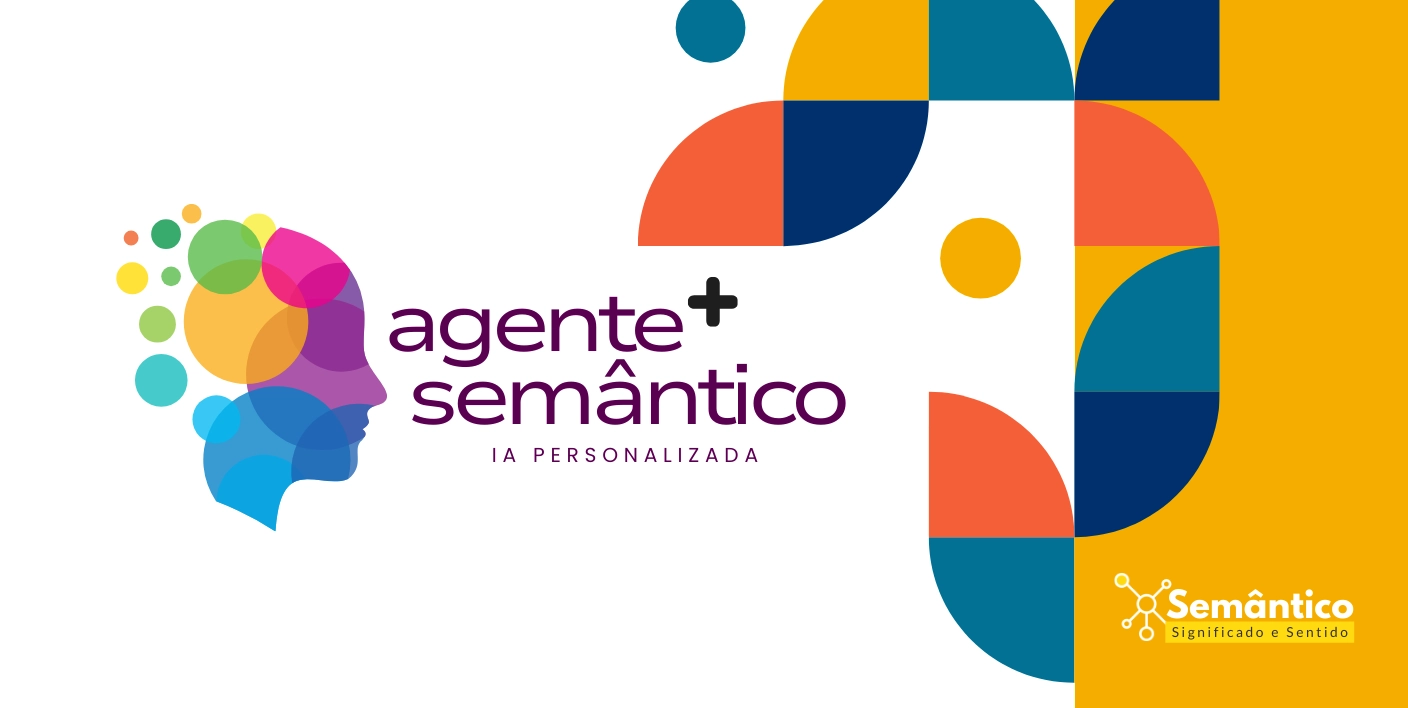
A Entrevista de Referência em essência
Precisamos entender uma diferença fundamental entre dois conceitos importantes para o nosso artigo: “serviço de referência” e “processo de referência“.
O serviço é a ação concreta do profissional, a interação direta. O processo, por sua vez, é a jornada completa do usuário, incluindo as fases internas e cognitivas que precedem e sucedem o contato com o especialista. Compreender este percurso é o que nos permite, como estrategistas de SEO, intervir de forma mais competente.
Mas antes de mergulharmos nas aplicações nos agentes, precisamos revisitar o que constitui o serviço de referência e, em seu núcleo, a entrevista. Considerada por muitos o coração da biblioteconomia, a referência é uma atividade complexa e multifacetada. O bibliotecário, nesse contexto, atua como um mediador do conhecimento, um profissional que emprega métodos e ferramentas para guiar o usuário através do vasto universo informacional, ajudando-o a encontrar respostas que, muitas vezes, ele mesmo não saberia como procurar.
A entrevista de referência é o pilar desse processo. Ela pode ser definida como uma transação interativa na qual o profissional da informação formula uma ou mais perguntas a pessoa que precisa de uma informação com o objetivo de identificar, clarificar e refinar o tema da sua consulta.
Estudos clássicos da biblioteconomia demonstram que uma proporção significativa de respostas incorretas ou inadequadas, e a consequente insatisfação do usuário, origina-se de falhas na comunicação durante esse momento onde uma pessoa especializada em informação e a pessoa que precisa destas informações estão interagindo.
“Paradoxalmente, a introdução da máquina no processo de referência forçará até mesmo o mais relutante bibliotecário de referência a agir como um ser humano que interage com outro.”
William A. Katz, 1978
O problema central é que o usuário, frequentemente, não sabe expressar com precisão o que necessita ou, em casos mais complexos, nem mesmo tem certeza do que procura. Essa primeira pergunta que o usuário faz, chamamos de Questão Inicial, e ela é apenas a ponta do iceberg de uma necessidade informacional que é mais profunda. É aqui que a entrevista se torna uma ferramenta decisiva, especialmente para dois grupos de pessoas:
- Aqueles que sabem o que precisam, mas não conseguem articular adequadamente sua necessidade.
- Aqueles que não têm certeza sobre o que realmente precisam para resolver seu problema.
Para este segundo grupo, a entrevista não é mais que útil; ela é imprescindível. Ignorá-la é o caminho mais curto para uma busca ineficiente e resultados frustrantes. Isso no cenário clássico da Biblioteca.
Mas como isso pode acontecer na interação com os agentes de IA? É possível usar o conhecimento da Biblioteconomia como orientador para ter melhores resultados numa pesquisa usando o seu modelo preferido? Eu já te respondo: Sim, é sim. Eu mesmo tenho feito isso por meses seguidos e com excelentes resultados.
O Google Gemini como Bibliotecário de Referência
A ascensão de IAs como o Gemini nos força a repensar nossa relação com as ferramentas de busca. Não estamos mais lidando com um indexador de páginas que responde a pesquisas. Um agente pode ser entendido como um “motor de síntese”, um sistema capaz de processar, contextualizar e gerar informação de maneira dialógica. Nesse novo paradigma, a IA assume o papel do bibliotecário de referência, o profissional responsável por conduzir a entrevista de referência e montar o nosso objeto de interesse: uma estratégia de busca.
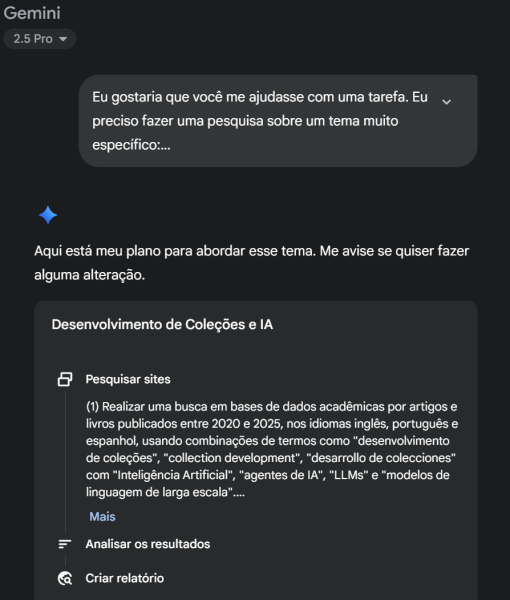
Na sua função deep research o Gemini pode atuar como o nosso bibliotecário particular e personalizado, basta que saibamos como orientar ele na criação de uma estratégia de buscas adequada ao nosso objetivo e a nossa necessidade de informação.
Nós podemos refinar a nossa busca, adicionando contexto, delimitando escopo e explorando facetas do conhecimento, para evitar um processo iterativo extenso e cansativo. Podemos fazer muito mais do que simplesmente “perguntar” ao modelo, mas podemos orientar ele, usando o conhecimento da Biblioteconomia para que a pesquisa saia, da primeira vez, do jeito que precisamos.
E para isso, as técnicas consagradas pela Biblioteconomia oferecem um roteiro de valor inestimável. Vem comigo que eu vou lhe apresentar dois frameworks para você aplicar. Primeiro vamos mostrar o modelo que Kipling criou e depois vamos passar para um outro clássico: Grogan.
Framework gerador de pesquisas com IA: os seis criados honestos de Kipling.
Rudyard Kipling, em um de seus poemas, nos presenteou com um lembrete de valor universal:
I Keep Six Honest Serving Men
I keep six honest serving-men (They taught me all I knew); Their names are What and Why and When And How and Where and Who. I send them over land and sea, I send them east and west; But after they have worked for me, I give them all a rest. I let them rest from nine till five, For I am busy then, As well as breakfast, lunch, and tea, For they are hungry men. But different folk have different views; I know a person small— She keeps ten million serving-men, Who get no rest at all! She sends 'em abroad on her own affairs, From the second she opens her eyes— One million Hows, two million Wheres, And seven million Whys!Rudyard Kipling in Rudyard Kipling, Just So Stories (1902)
Numa tradução livre e do trecho mais importante para nós, temos:
“Eu mantenho seis criados honestos (Eles me ensinaram tudo o que eu sabia); Seus nomes são: O quê, Por quê, Quando, Como, Onde e Quem.”
Estas seis perguntas formam um framework robusto e altamente eficiente na estruturação de uma entrevista de referência e que podem ser diretamente adaptadas para a formulação de uma estratégia de busca aprofundada com o Gemini.
Vamos caminhar em cada uma das perguntas, montando um prompt para uma pergunta inicial já muito bem estruturada que vai nos poupar um tempo enorme.
1. O Quê?
Este é o ponto de partida de qualquer busca e seu objetivo é delimitar com clareza o tópico central da investigação, ela nos ajuda a focar na determinação e desambiguação do assunto que estamos precisando conhecer. nos termos do Fluxo de Trabalho Semântico, o Domínio do Conhecimento. Nesta fase o bibliotecário busca clareza sobre os termos utilizados pelo usuário. Ele pode usar dicionários ou enciclopédias para desambiguar a terminologia e utiliza a paráfrase (“Então, o que você está procurando é…”) para confirmar o entendimento e encorajar o usuário a elaborar.
Consegue entender de onde eu tirei a ideia de usar vocabulários controlados no SEO?
Como aplicar no Gemini?
- Definição de Papel (Persona): Inicie o prompt atribuindo um papel à IA. Exemplo: “Atue como um pesquisador sênior em biologia molecular.” Isso ajusta o léxico e o nível de profundidade da IA.
- Terminologia e Desambiguação: Se o seu tema envolve termos polissêmicos (com múltiplos significados), forneça o contexto no próprio prompt. Exemplo: “Faça uma análise sobre ‘manga’, a fruta (Mangifera indica), e não a parte da roupa ou o gênero de quadrinhos japoneses.”
- Paráfrase ativa: Você pode adotar a estratégia de usar a IA para refinar o escopo da pesquisa. Após uma resposta inicial, que poderá ser incompleta, peça: “Com base na sua resposta, refine a busca para focar nos aspectos genéticos da resistência a pragas. Ignore os aspectos comerciais da colheita.” Isso simula a negociação e o refinamento que ocorrem em uma entrevista real, mas é ineficiente quando lidamos com um modelo de pesquisa profunda que demora muitos minutos para fazer a busca e consome muitos recursos do meio ambiente. Eu prefiro fazer uma outra estratégia que vou explicar mais a frente.
- Lidando com a incompletude: Se sua própria questão é incompleta, use a IA para expandi-la. Exemplo: “Estou pesquisando sobre ‘redes neurais’. Quais são os subtópicos mais importantes e as áreas de aplicação que eu deveria considerar para uma pesquisa abrangente?”
2. Por Quê?
Compreender a finalidade da informação é dos pontos principais para a relevância da resposta que vai ser entregue, e nos ajuda a definir o propósito e o contexto da nossa pesquisa. Um mesmo tópico pode ser abordado de inúmeras maneiras, dependendo do seu uso final, então precisamos entender como responder a essa pergunta.
O bibliotecário pergunta sobre a finalidade da pesquisa. É para um trabalho escolar? Um artigo científico? Uma decisão de negócios? Curiosidade pessoal? A resposta a essa pergunta muda completamente a estratégia de busca.
Como aplicar no Gemini?
Contextualização Explícita: Incorpore o propósito diretamente no prompt. A diferença entre os resultados será notável. Explique ao agente para que precisa daquela pesquisa, qual contexto ela vai ser usada. Vamos ao nosso exemplo anterior:
De: “Faça uma análise sobre ‘manga’, a fruta (Mangifera indica), e não a parte da roupa ou o gênero de quadrinhos japoneses.” para “Eu preciso fazer uma pesquisa para a minha aula de Biologia do nono ano de ensino fundamental onde preciso escrever um roteiro para um vídeo falando sobre todos os usos na alimentação do brasileiro da fruta Manga (Mangifera indica), e não a parte da roupa ou o gênero de quadrinhos japoneses.“
O contexto está agora descrito no prompt inicial. Mas isso é somente a primeira parte do trabalho, mas vamos com calma, chegaremos lá, passo a passo.
3. Quem?
Intimamente ligada ao “Por Quê?”, a pergunta “Quem?” define para quem a informação se destina, ajustando o tom, a linguagem e a profundidade e nos ajuda a entender o perfil do nosso público. Numa entrevista na biblioteca, o bibliotecário procura saber quem é o consulente.
- Qual seu nível de conhecimento sobre o tema?
- Ele está buscando a informação para si ou para um terceiro (um chefe, um cliente)?
Aplicação no Gemini
Definição da Audiência: Seja explícito sobre o público do conteúdo que a IA irá gerar. Vamos voltar ao nosso exemplo:
Eu sou um aluno do nono ano do ensino médio no brasil e preciso de sua ajuda para fazer uma pesquisa para a minha aula de Biologia, eu e meus colegamos precisamos dar escrever um roteiro para um vídeo falando sobre todos os usos na alimentação do brasileiro da fruta Manga (Mangifera indica), e não a parte da roupa ou o gênero de quadrinhos japoneses.
Agora demos um pouco mais de informação ao modelo para saber quem somos. Mas vamos seguir em frente.
4. Como?
Esta pergunta define a “embalagem” da informação. O formato da saída é tão importante quanto o conteúdo em si e ajuda ao modelo de sua escolha a gerar a resposta no nível de detalhes mais adequados ao seu objetivo, que no nosso caso é gerar uma pesquisa para basear um roteiro para o seu vídeo.
Atuando como bibliotecário de referência o profissional questiona se o usuário precisa de “apenas uma introdução”, uma “busca exaustiva”, referências bibliográficas, resumos ou textos completos. Trabalhando com um modelo ou agente de IA, você precisa informar também que tipo de saída vai querer, mas aqui no nosso caso vamos ter um relatório em texto, então não precisa se preocupar com isso.
Aplicação no Gemini:
Especificação de Formato: Dê comandos claros sobre o detalhamento da resposta desejada. Como no nosso caso é uma pesquisa para gerar um roteiro para um vídeo para uma aula de Biologia, podemos optar por algo mais introdutório, ficando assim:
Eu sou um aluno do nono ano do ensino médio no brasil e preciso de sua ajuda para fazer uma pesquisa introdutória sobre os principais os usos da fruta Manga (Mangifera indica) na alimentação no Brasil. Essa pesquisa será a base para a criação de um roteiro de um vídeo que eu e meus colegamos vamos apresentar na nossa aula de Biologia.
5. Quando? e 6. Onde?
Quero te chamar a atenção para essas duas perguntas, que estão agrupadas de propósito. Esses dois filtros são cruciais para afunilar a busca e aumentar drasticamente a pertinência dos resultados, economizando tempo e esforço. As restrições temporais. idiomáticas e geográficas são o ajuste fino no uso das estratégias da entrevista de referência em modelos de IA.
O bibliotecário, na sua atuação, pergunta sobre limitações de data ou localidade. A informação precisa ser atual? Refere-se a uma região específica? As limitações de idioma podem ser definidas aqui também.
Aplicação no Gemini:
Adição de Restrições: Integre essas limitações diretamente nos seus prompts para que a IA filtre o universo de informações. Como no nosso caso é uma pesquisa para alunos do ensino médio do Brasil, podemos finalizar o nosso prompt inicial, desta maneira:
Eu sou um aluno do nono ano do ensino médio no brasil e preciso de sua ajuda para fazer uma pesquisa introdutória sobre os principais os usos da fruta Manga (Mangifera indica) na alimentação no Brasil. Essa pesquisa será a base para a criação de um roteiro de um vídeo que eu e meus colegamos vamos apresentar na nossa aula de Biologia. Limite a pesquisa para fontes em português brasileiro, de fontes brasileiras e que foram publicadas entre os anos de 2000 a 2025.
Pronto! Temos a nossa pesquisa inicial pronta, agora basta irmos no Gemini (ou no seu modelo preferido) e escolher a função de pesquisa profunda.
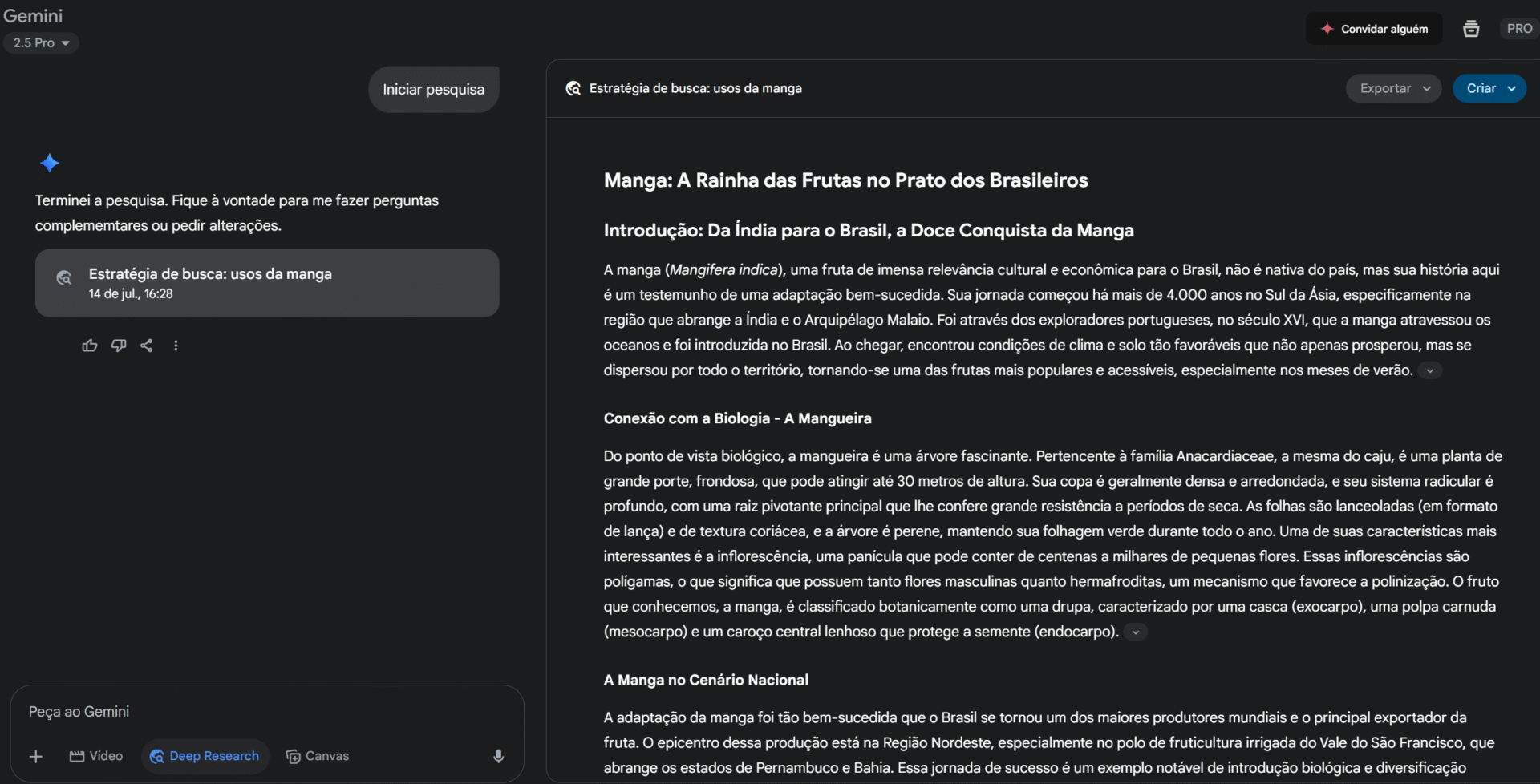
Acesse esse link para ler o relatório da pesquisa gerada pelo Gemini com base no nosso prompt que foi construído seguindo o modelo do Kiplin: Manga: A Rainha das Frutas no Prato dos Brasileiros. E na imagem abaixo você vê um print com algumas das referências usadas pelo Gemini para gerar o relatório.
Elas serão a nossa fonte para criar um agente especialista em Mangas, que vou mostrar mais tarde para vocês.

Técnicas interação com a IA
Antes de falarmos sobre o modelo do Grogan, precisamos passar por um assunto interessante, que vai ser importante lá na frente: os tipos de pergunta. Saiba que a entrevista de referência nos oferece técnicas muito refinadas que podem ser adaptadas para um diálogo verdadeiramente eficiente com o seu modelo preferido. Vamos a elas:
- Perguntas Abertas vs. Fechadas: Uma pergunta “aberta” (“Fale sobre SEO Semântico”) é ideal para a fase exploratória, para mapear um domínio. Uma pergunta “fechada” (“A tag ‘canonical’ previne a indexação de uma página?”) serve para validar fatos específicos e obter respostas diretas. Você pode alternar entre os dois tipos para guiar a pesquisa e começar a criar o seu prompt.
- A “Pergunta Neutra” e o Poder da Meta-Busca: Esta é talvez a técnica mais impactante. Em vez de pedir a resposta final, use a IA para ajudá-lo a construir uma estratégia de busca melhor. Isso é “perguntar sobre a pergunta”.
- “Quais são as subáreas e os conceitos mais importantes relacionados à ‘Teoria dos Grafos’ para um iniciante?”
- “Qual seria a estrutura ideal (tópicos e subtópicos) para um artigo completo sobre ‘O impacto da desinformação nas democracias’?”
- “Sugira 5 perguntas essenciais que um especialista em logística faria para otimizar uma cadeia de suprimentos.”
- Escuta atenta e o Loop de Feedback: No contexto da IA, a “escuta atenta” se traduz em ler e analisar criticamente cada resposta gerada antes de formular o próximo prompt. Identifique lacunas, imprecisões, ou áreas que merecem aprofundamento. Cada resposta da IA é um convite para o próximo passo da entrevista.
Queria citar a questão das perguntas, por elas serem importantes para o nosso próximo passo.
Framework gerador de pesquisas com IA: os oito passos de Grogan
Enquanto as seis perguntas de Kipling nos oferecem um framework completo para preparar o nosso prompt gerador da pesquisa, o modelo de Denis Grogan, um dos mais respeitados teóricos do serviço de referência, nos fornece um mapa completo do processo, uma visão holística que abrange a jornada do usuário desde a necessidade de informação até a sua resolução final.
“Os computadores, como é sabido, carecem desse bom senso e somente eliminarão trabalhos incompreensíveis para o usuário ou livros obsoletos se forem especialmente instruídos a fazer isso.”
GROGAN, 2001, p. 83
Precisamos lembrar que a diferença entre serviço e processo, entre a ação concreta do profissional e a jornada do usuário. A jornada que o usuário faz é maior do que o serviço de referência e é não é incomum que a pessoa que precisa da informação volte ao bibliotecário para uma nova rodada de pesquisa.
Vamos agora desvelar os oito passos de Grogan e, para cada um, traçar um paralelo direto com a utilização da funcionalidade de deep research do Google Gemini, como fizemos com as perguntas do Kipling. Para resumir, os passos são: o problema, a necessidade de informação, a questão inicial, a questão negociada, a estratégia de busca, o processo de busca, a resposta e a solução.
1º Passo: O problema
Tudo começa na mente do usuário, quando ele identifica uma “lacuna de conhecimento”, uma incerteza que gera um problema. Na Biblioteconomia isso é chamado de Gap Informacional.
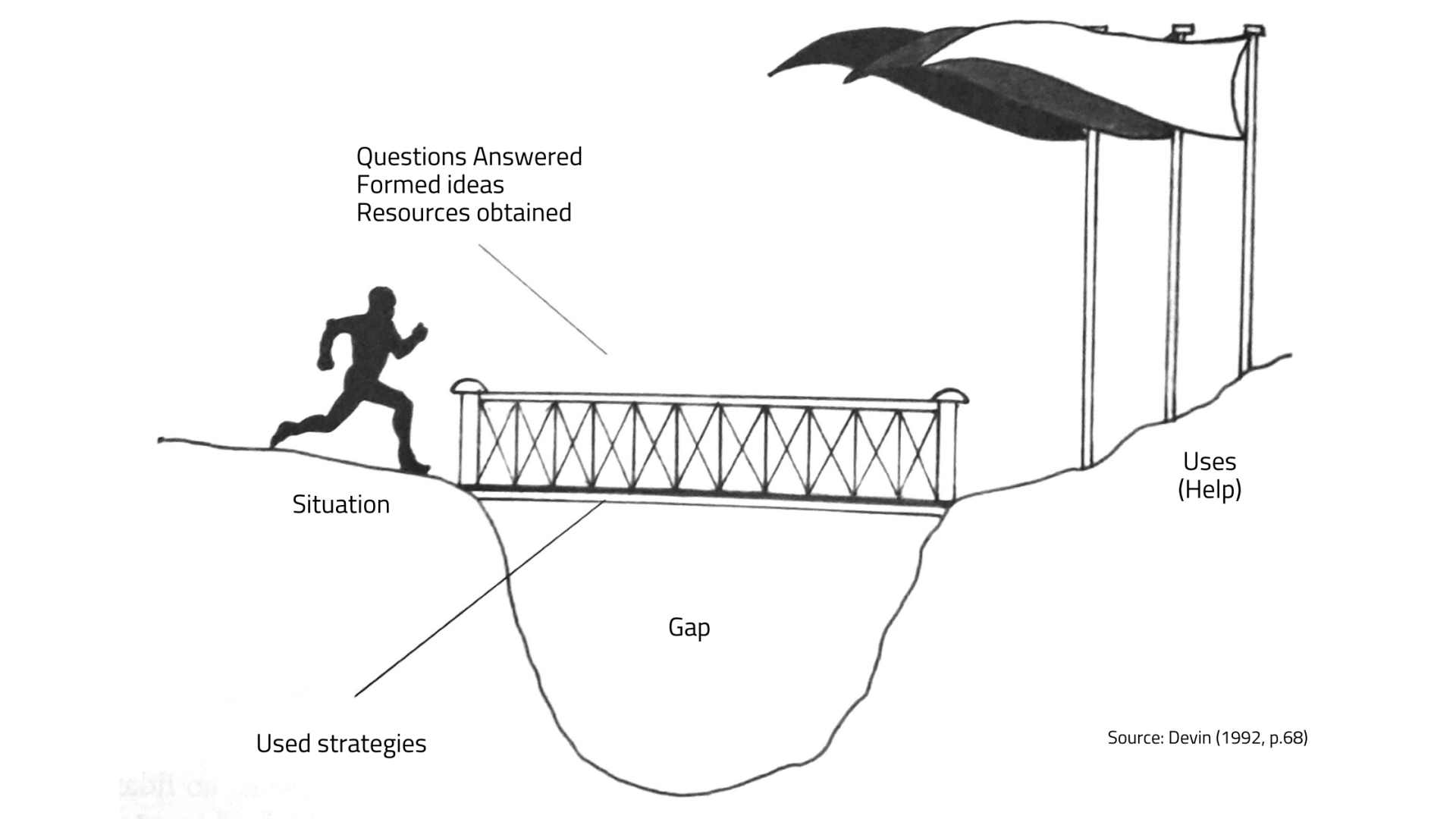
Grogan, referenciando os estudos seminais de Robert S. Taylor, descreve essa necessidade como visceral, ela é uma insatisfação vaga, um desconforto que, muitas vezes, ainda não pode ser articulada em palavras. É uma fase inteiramente interna, um monólogo silencioso que ocorre “dentro da cabeça do consulente”, somente depois da pessoa passar por esse processo é que uma busca, no contexto do nosso artigo, efetivamente se inicia.
Existem portanto uma série de implicações para o Bibliotecário. Mesmo que o profissional não atue diretamente neste estágio, ele precisa reconhecer sua existência. A compreensão de que toda busca nasce de uma percepção de “insuficiência”, de “falta” ou “inadequação” de conhecimento é o que fundamenta a empatia e a paciência necessárias para todo o processo subsequente.
Quando uma pessoa inicia um busca é devido a um entendimento que ela não sabe o suficiente e essa constatação dispara uma série de sentimentos. O processo de busca da informação de Kuhlthau pode lhe ajudar a entender essa questão com mais profundidade.
Tradução para o Gemini:
Este é o momento pré-prompt. É a fase de ideação, onde você, o pesquisador, sente a necessidade de explorar um tópico, mas talvez ainda não tenha clareza sobre o objetivo, escopo ou os termos que vai usar. A minha recomendação é reconhecer a natureza “visceral” da sua própria busca, mergulhar de cabeça no que te falta: a certeza e olhar para o seu objetivo. O que voc6e precisa resolver e não tem a informação para chegar na solução.
Mas não se sinta pressionado a formular o prompt perfeito logo de início. Aceite que a primeira interação com o Gemini será, muito provavelmente, uma exploração dessa necessidade ainda difusa. Talvez não seja a hora de fazer uma busca aprofundada, mas uma investigação básica.
2º Passo: A necessidade de informação
O problema abstrato agora precisa se transformar em um objetivo consciente: a necessidade de buscar informação para preencher a lacuna, por isso eu pedi que você mergulhe na falta mas não perca o objetivo de vista.
Esta fase ainda é predominantemente interna, mas a intenção de agir já está formada. A motivação pode variar imensamente, da simples curiosidade à urgência de uma decisão crítica. Como o filósofo Bertrand Russell observou, as pessoas não buscam apenas conhecimento, mas “certeza”. O papel da informação é, portanto, reduzir a incerteza.
Entender que a curiosidade é uma força motriz poderosa e que o objetivo final é mitigar a incerteza nos permite ser mais proativos e acolhedores, validando a jornada do usuário desde seus primeiros momentos, é a maior implicação para o Bibliotecário neste momento. E como será que podemos traduzir isso para o Gemini?
Tradução para o Gemini:
Aqui começamos a ativamente trabalhar com o Gemini para resolver o nosso problema, montar a nossa busca e no final do processo gerar o nosso relatório (lembrando que nos estudo de Grogan esse não é a final da busca para o usuário). Este é o momento em que você abre a interface do Gemini com um propósito. Sua meta não é apenas “investigar possibilidades”, mas transformar a incerteza em clareza, ou pelo menos começar esse processo.
3º Passo: a questão inicial
O momento de construir a nossa questão inicial, ou o nosso caso, o nosso prompt em sua versão 1.0, é um processo contínuo, um tanto integrado ao passo anterior. Mas não se engane, este é um momento crítico!
Esta é a primeira verbalização da necessidade, o primeiro contato com o bibliotecário, ou com o nosso Bibliotecário Digital, o Gemini. É a transformação do pensamento interno em uma pergunta externa. No entanto, como Eleanor B. Woodruff já notava em 1897, é raro que esta questão inicial seja um reflexo perfeito da necessidade real. Ela é frequentemente “vaga”, “ambígua”, “incompleta” ou “genérica”. O “dom” do bibliotecário, segundo ela, é justamente extrair a ideia nítida por trás do pedido vago. E aqui reside uma falta intríseca dos agentes de IA: eles não são bibliotecários, não vão sentir empatia de você e te ajudar a construir uma questão inicial, ou seu primeiro prompt com um ser humano faria.
Por isso eu criei esse vídeo:
A principal implicação para o bibliotecário é que essa é a hora da ação, está na hora de colocar em prática a “competência de perguntar” que ele desenvolveu e ajudar a pessoa que procura. Os profissionais experientes em serviços de referência voltam a sua atenção para as pistas verbais e não-verbais que veem da pessoa que precisa da informação, e começam a decifrar o mistério da busca, entre o que foi e o que não foi dito.
Tradução para o Gemini:
A questão inicial é, literalmente, o seu primeiro prompt. E, assim como na referência humana, ele provavelmente será imperfeito.
Lembre-se que você já pode ter experimentado algumas iterações com o seu modelo, mas agora é vai vai iniciar a construção do seu prompt final. Um exemplo de prompt inicial pode ser esse:
“Me fale sobre o mercado de energia solar.”
Aqui temos um prompt bem genérico, que não ajuda ao agente a saber se você quer dados históricos, tendências futuras, informações sobre tecnologia de painéis, políticas de incentivo no Brasil ou uma análise de mercado global. Portanto, a resposta será ampla e, provavelmente, superficial. É o equivalente digital de chegar ao balcão de uma biblioteca e dizer: “Quero livros sobre energia”.
Mas tudo bem iniciar com um prompt assim, mas lembre-se: para poupar seu tempo e geração de buscas ineficientes, não gere uma pesquisa ainda.
4º Passo: a questão negociada
Aqui reside a essência da referência. Grogan nos ensina que a questão negociada é uma “transação” colaborativa onde a questão inicial é negociada, refinada e clarificada.
Um estudo de Mary Jo Lynch já em 1976 revelou que quase metade das consultas em bibliotecas exigiam essa negociação. Esse estudo, que foi uma pesquisa doutoral de Mary Jo Lynch pela Rutgers University, analisou transações em quatro bibliotecas públicas e descobriu que as entrevistas de referência ocorriam em 49% das consultas. Ou seja, quase metade das interações com os usuários necessitava de uma intervenção ativa do bibliotecário para identificar, esclarecer e aprimorar a verdadeira questão do consulente.
A falta dela é uma das principais causas de falha no serviço. Esta fase exige sensibilidade, perspicácia e um vasto conhecimento geral, pois o bibliotecário precisa reformular a questão em termos que o sistema de informação (seja ele um catálogo ou uma base de dados) possa compreender.
É aqui que os seis criados honestos de Kipling nos socorrem, e os dois frameworks podem trabalharm em conjunto. A boa notícia é que você já sabe como usá-las, a má notícia é que não pode contar com uma pessoa bibliotecária para te ajudar, a não ser que você vá numa biblioteca perto da sua casa.
Segundo o modelo de Kipling, as perguntas abertas (“O que especificamente sobre o carros elétricos me interessa?”) são preferíveis às fechadas (“Eu quero saber sobre baterias de Lítio nos novos modelos chineses?”).
O objetivo aqui é entender o “motivo e contexto”, pois, como diz Grogan, o consulente “não pode definir o que quer, mas pode comentar por que precisa”.
Tradução para o Gemini:
Este é o processo iterativo de refinamento de prompts. A “questão negociada” é, na verdade, uma sequência de prompts.
- Prompt 1 (Questão Inicial): “Me fale sobre o mercado de energia solar.”
- Prompt 2 (Negociação com “Onde?” e “Quando?”): “Excelente ponto de partida. Agora, refine essa análise focando exclusivamente no mercado brasileiro de energia solar residencial nos últimos dois anos.”
- Prompt 3 (Negociação com “Por Quê?” e “Como?”): “Com base nesses dados, crie uma tabela comparando os custos de instalação e o tempo médio de retorno do investimento (ROI) para as três principais tecnologias de painéis fotovoltaicos disponíveis no Brasil.”
Este diálogo é a coprodução entre você e a IA, onde você aplica o framework de Kipling para transformar uma questão genérica em uma consulta precisa e eficiente. Lembre-se que não precisa usar o Deep Research ainda.
5º Passo: a estratégia de busca
Com a questão negociada em mãos, o bibliotecário traça um plano de ação intelectual. Você com a sua pesquisa inicial finalizada já tem um prompt escrito para gerar a pergunta inicial.
No cenário de uma biblioteca, o Blbiotecário seleciona as fontes mais adequadas (enciclopédias para uma visão geral, periódicos para pesquisas recentes), escolhe títulos específicos e define os pontos de acesso (termos de busca, sinônimos, cabeçalhos de assunto).
O sucesso aqui depende do conhecimento íntimo das fontes e daquela “intuição” que, na verdade, é fruto de anos de prática. Este é um trabalho de análise que exige a decomposição do tema em suas facetas, a identificação de termos-chave e o uso de ferramentas como tesauros e índices. O nosso modelo
Tradução para o Gemini:
Em vez de você criar a estratégia do zero, você pode usar a IA para co-criar o plano de busca. Esta é uma tática avançada. Depois de fazer as perguntas abertas a si mesmo, e encontrar as respostas, você pode gerar um prompt assim:
“Estou pesquisando o tema ‘Adoção da Inteligência Artificial em Logística’. Para criar um relatório completo, quais seriam as fontes de informação mais importantes a serem consultadas (ex: relatórios de mercado, publicações acadêmicas, principais empresas do setor)? Quais são os termos e sinônimos-chave que eu deveria usar para aprofundar a pesquisa?”
O seu agente não apenas fornecerá a informação, mas também o ajudará a estruturar a própria pesquisa, um passo interessante na otimização do seu tempo. Mas espere, não use ainda o Deep Research.
6º Passo: O Processo de Busca
Esta é a execução prática da estratégia. É uma atividade dinâmica, não linear, onde vamos para a ação. No nosso cenário da Biblioteca, o profissional se adapta, segue novas pistas que surgem e explora caminhos não previstos inicialmente. A busca pode ser manual, informatizada ou uma combinação de ambas.
No contexto da Biblioteconomia essa fase exige proficiência no uso das ferramentas de busca por parte de quem conduz o processo. A rapidez na resposta pode impressionar, mas não deve sacrificar a qualidade e o aspecto humano da interação.
Tradução para o Deep Research com Gemini:
Agora sim, vamos usar o Deep Research! Esta é a a nossa sessão interativa com o agente. Esteja preparado para a serendipidade, que é a capacidade de encontrar algo valioso ou útil sem ter procurado por isso especificamente. Nesta fase a ocorrência de descobertas agradáveis e inesperadas, muitas vezes por acaso, durante uma busca por algo diferente, é muito comum. E se tratando de um modelo de Inteligência Artificial, as surpressas podem envolver descobertas inesperadas mas não tão agradáveis assim.
Mas não tema, você não chegou até aqui para desistir! Você tem na sua mão o seu prompt especialmente criado para gerar o melhor relatório de buscas.
Lembrese que a IA pode apresentar uma conexão ou um subtópico que você não havia considerado. Não hesite em desviar do seu roteiro inicial para explorar essas novas avenidas. Use a capacidade dos modelos de processar grandes volumes de dados para testar hipóteses rapidamente: “Analise os dados da resposta anterior e identifique quaisquer correlações entre o custo de implementação e a localização geográfica das empresas.”
7º Passo: A resposta
Agora temos a informação entregue ao usuário, no nosso caso, você. Na maioria dos casos, é um documento, um dado específico ou uma referência bibliográfica. No nosso caso é o relatório que o Gemini lhe entrega. Você clicou no link que eu coloquei lá em cima para ver o relatório gerado anteriormente?
Como julgar a qualidade do seu relatório?
A resposta deve ser clara e tecnicamente apurada, o relatório deve ser conduzir a sua interpretação dos resultados e, evitar informações e dados desnecessários na resposta que você procura, lhe ajudando a manter o foco na solução da sua busca por informação.
Portanto, a resposta do Gemini é o texto gerado. Você precisa entender que esta não é a etapa final. O arquivo de saída que o modelo gera é um “rascunho bruto de alta qualidade”. Ele deve ser visto como a matéria-prima, não como o produto acabado. Seu papel é verificar, validar, contextualizar e editar essa resposta.
8º Passo: A solução
Este passo final pertence, em última instância, a você.
A solução é alcançada quando o consulente, a pessoa que faz a consulta, confirma que a informação fornecida resolveu seu problema e satisfez sua necessidade de informação. Se isso não ocorrer, o processo retorna ao 4º passo: a negociação da questão.
A “solução” não é a resposta da IA, mas sim o produto final que você cria a partir dela: o relatório finalizado, o artigo publicado, a apresentação polida, a decisão de negócio informada. É o resultado da sua curadoria, análise crítica e síntese do material gerado pela IA.
Se, ao revisar a “resposta” do Gemini (Passo 7), você perceber que ela não atende à sua “necessidade visceral” (Passo 1), você não falhou. Você simplesmente reinicia o ciclo no Passo 4, negociando a questão com um prompt mais refinado e específico, em um processo contínuo de aprimoramento até que a solução adequada seja alcançada.
O Futuro da Busca é uma parceria Humano-Máquina?
O uso de ferramentas como o Gemini, ChatGPT, Claude e outras não exclui a necessidade e nem diminui a importância do profissional da informação; pelo contrário, ela o eleva. Você mesmo viu que existem fases desse processo que o conhecimento de um bibliotecário é necessário.
A capacidade de conduzir um diálogo profundo e estruturado com a IA, utilizando os princípios atemporais da entrevista de referência, deveria ser entendida como uma habilidade valiosa e eficaz para navegar na complexidade informacional do século XXI e além.
“A finalidade do serviço de referência e informação é permitir que as informações fluam eficientemente entre as fontes de informação e quem precisa de informações. Sem que o bibliotecário aproxime a fonte do usuário, esse fluxo jamais existirá ou só existirá de modo ineficiente.”
Kenneth Whitaker
Dominar a arte de perguntar, o “O quê”, o “Por quê”, o “Quem”, o “Como”, o “Quando” e o “Onde”, no contexto digital pode ser o que separa a obtenção de respostas superficiais da construção de um conhecimento profundo e verdadeiramente útil. A entrevista de referência, não é algo que deve ficar relegado ao passado analógico e as bibliotecas, ao meu ver essa atividade é a parceira ideal da inteligência artificial.
A excelência na busca, hoje e no futuro, é uma coprodução, uma parceria onde a inteligência humana guia, refina e extrai o melhor da inteligência artificial.
Com esse relatório em mãos você tem duas opções:
- Criar um notebook no NotebookLM do Google: faça perguntas ao seu notebook sobre as suas ideias do artigo, interaja e use ele como o seu especialista no assunto que vai tratar.
- Criar um outro agente: Crie um outro agente especializado que usa todas essas informações e gera um briefing para um ser humano escrever. Com as devidas adaptações você pode gerar um briefing para um outro agente especializado em escrever.
Na segunda parte deste artigo eu vou lhe mostrar com usar o relatório que geramos para a nossa busca para criar um agente especializado no assunto que você quiser!
REFERÊNCIAS
- ACCART, Jean-Philippe. Serviço de referência: do presencial ao virtual. Brasília, DF: Briquet de Lemos, 2012.
- BALBINOTTI, Stheve. Desvendando os oito passos de Grogan em um processo de referência. Revista ACB: Biblioteconomia em Santa Catarina, Florianópolis, v. 25, n. 3, p. 571-587, ago./dez., 2020.
- FERREIRA, Nalin. Marketing SRI (Slides). [S.l.: s.n.], [s.d.]. Material didático.
- FERREIRA, Nalin. PRÁTICA DO SERVIÇO DE REFERÊNCIA: um relato de experiência na área da saúde. [S.l.: s.n.], [s.d.]. Material didático.
- FIGUEIREDO, Nice Menezes de. Serviços de referência e informação. São Paulo: Polis: APB, 1992.
- GILLUM, Shalu. The Changing Face of Public Services in Health Sciences Libraries Post-Pandemic. Medical Reference Services Quarterly, v. 43, n. 2, p. 152-163, 2024.
- GROGAN, Denis. A prática do serviço de referência. Tradução de Antonio Agenor Briquet de Lemos. Brasília, DF: Briquet de Lemos/Livros, 1995.
- GROGAN, Denis. A prática do serviço de referência. Brasília: Briquet de Lemos, 2001.
- HIGGINS, Julian et al. Update from the Methodological Expectations of Cochrane Intervention Reviews (MECIR) project. Cochrane methods, v. 2, n. 3, 2012.
- IFRS CAMPUS PORTO ALEGRE. Protocolo para elaboração de estratégia de busca. Porto Alegre: IFRS Campus Porto Alegre, [s.d.].
- LANKES, R. D. Expect more: melhores bibliotecas para um mundo complexo. São Paulo: Febab, 2016.
- LANKES, R. D. Bad Libraries Build Collections, Good Libraries Build Services, Great Libraries Build Communities. 2012. Disponível em: https://davidlankes.org/beyond-the-bullet-points-bad-libraries-build-collections-good-libraries-build-services-great-libraries-build-communities/. Acesso em: 7 maio 2025.
- MEDICAL LIBRARY ASSOCIATION- MLA. Professional development. Professional competencies. Disponível em: mlanet.org/page/competencies. Acesso em: 4 abr. 2022.
- MONTEIRO-KREBS, Luciana. BIB03088 – Serviço de Referência e Informação: Aula 01_v2. [S.l.: s.n.], [s.d.]. Material didático.
- MONTEIRO-KREBS, Luciana. BIB03088 – Serviço de Referência e Informação: Aula 04b. [S.l.: s.n.], [s.d.]. Material didático.
- MONTEIRO-KREBS, Luciana. BIB03088 – Serviço de Referência e Informação: Aula 2 – Slides. [S.l.: s.n.], [s.d.]. Material didático.
- MONTEIRO-KREBS, Luciana. BIB03088 – Serviço de Referência e Informação: SRI virtual. [S.l.: s.n.], [s.d.]. Material didático.
- MONTEIRO-KREBS, Luciana. Quadro de indicadores de desempenho do serviço de referência. [S.l.: s.n.], [s.d.]. Material didático.
- MORO, Eliane Lourdes da Silva; SILVEIRA, Manoela; PARANHOS, Mariana; MARTINI, Paula. O que é um serviço de referência presencial. Porto Alegre: UFRGS, 2015. Trabalho acadêmico (Graduação em Biblioteconomia e Ciência da Informação) – Universidade Federal do Rio Grande do Sul, Faculdade de Biblioteconomia e Comunicação Social, Departamento de Ciências da Informação, Porto Alegre, 2015.
- NATIONAL LIBRARY OF MEDICINE. NETWORK OF THE NATIONAL OF LIBRARY OF MEDICINE. Health literacy. Disponível em: https://nnlm.gov/initiatives/topics/health-literacy#toc-4. Acesso em: 4 abr. 2022.
- SANTA BIBLIOTECONOMIA. Os 8 Passos do Serviço de Referência Segundo Grogan. [S.l.]: Santa Biblioteconomia, [s.d.]. Duração: 07min00s. Disponível em: https://youtu.be/NqS8pB48y14. Acesso em: 18 maio 2024.
- SILVEIRA, Nalin Ferreira da. O Information Commons nas bibliotecas universitárias brasileiras: suporte à pesquisa e à inovação para o desenvolvimento científico e social. 2019. 181 f. : il. Dissertação (Mestrado Profissional em Informática na Educação) – Instituto Federal de Educação, Ciência e Tecnologia do Rio Grande do Sul, Porto Alegre, 2019.
- VARGAS, G. A. T.; AVILLANEDA, M. D. R. S. El servicio de referencia en la biblioteca digital. Investigación bibliotecológica, México, v. 19, n. 39, p. 120-133, 2009.
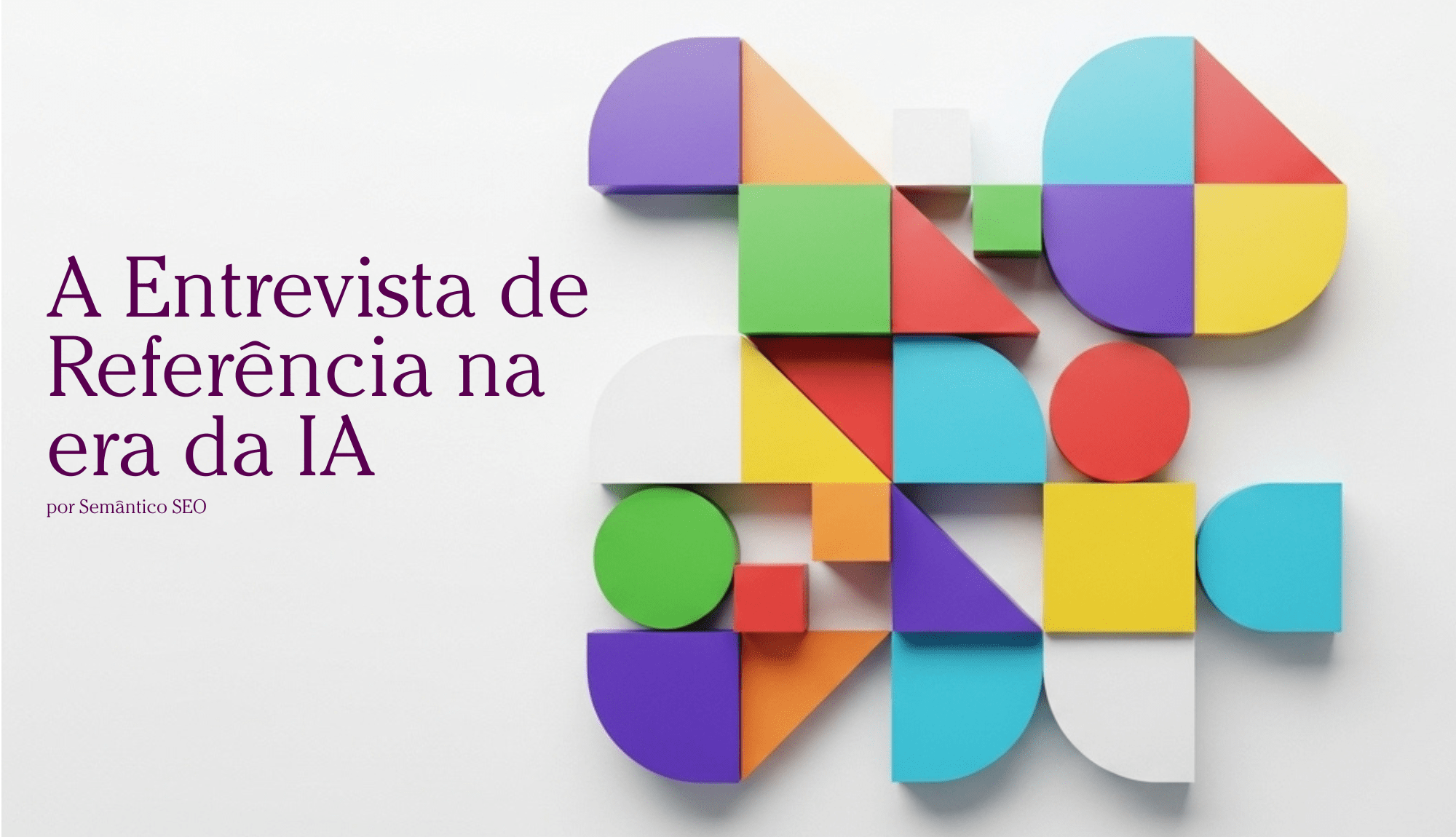
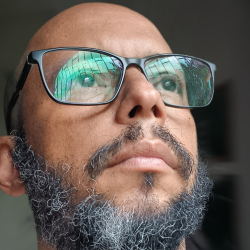


Publicar comentário